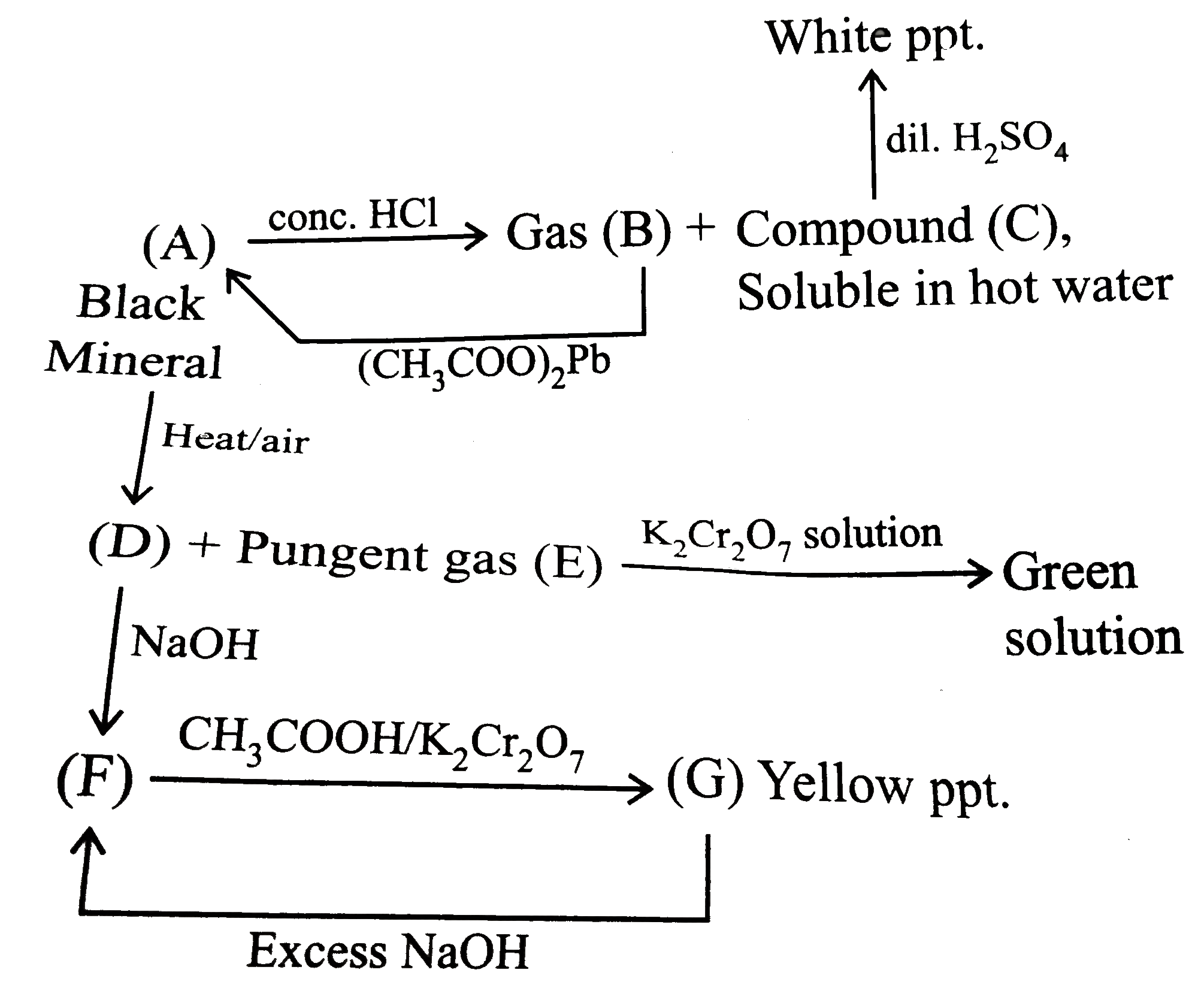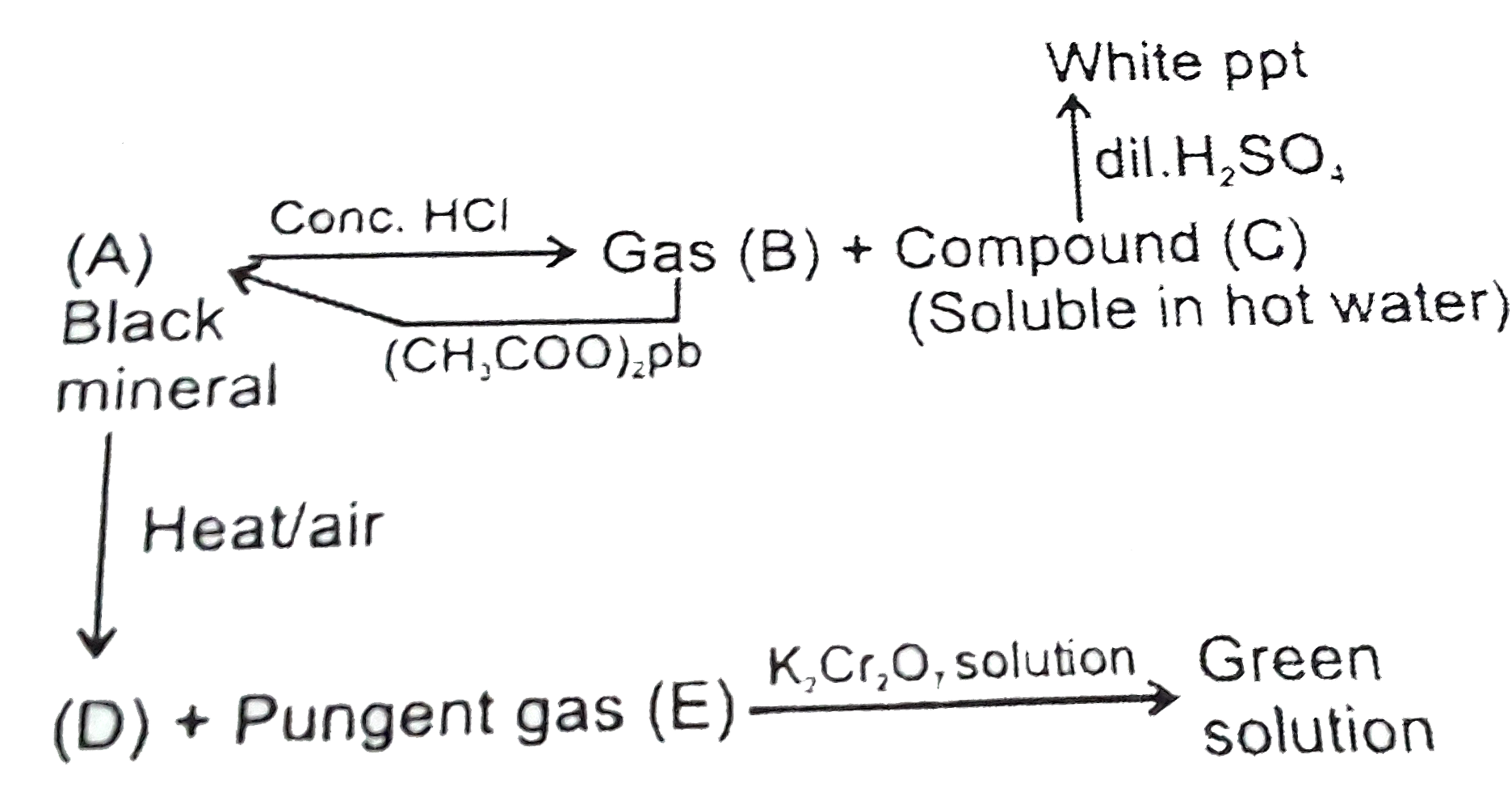An inorganic iodide (A) on heating with a solution of KOH gives a gas (B) and a solution of a compound. The gas (B) on ignition in air gives a compound (C ) and water. Copper sulphate is finally reduced to the methal on passing (B) through its solution.
The compound (C ) :
has sp3 hydbridisation of central atom(s)
has sixteen sigma bonds.
is used as a dehydrating agent.
all of these.
The correct Answer is:In the form of elemental nitrogen it
Step by step video, text & image solution for An inorganic iodide (A) on heating with a solution of KOH gives a gas (B) and a solution of a compound. The gas (B) on ignition in air gives a compound (C ) and water. Copper sulphate is finally reduced to the methal on passing (B) through its solution. The compound (C ) : by Chemistry experts to help you in doubts & scoring excellent marks in Class 12 exams.
Topper's Solved these Questions
- BOOK - RESONANCECHAPTER - P BLOCK ELEMENTSEXERCISE - ALP EX #3 OBJECTIVE1videos
P BLOCK ELEMENTS
- BOOK - RESONANCECHAPTER - P BLOCK ELEMENTSEXERCISE - ALP PART 1 SUBJECTIVE3videos
P BLOCK ELEMENTS
- BOOK - RESONANCECHAPTER - P BLOCK ELEMENTSEXERCISE - PART -III : Match the column2videos
P BLOCK ELEMENTS
- BOOK - RESONANCECHAPTER - NUCLEAR CHEMISTRYEXERCISE - STAGE-II1videos
NUCLEAR CHEMISTRY
- BOOK - RESONANCECHAPTER - P-BLOCK ELEMENT (BORON AND CARBON FAMILY)EXERCISE - PART - III : OLYMPIAD PROBLEMS (PREVIOUS YEARS) STAGE - V (INTERNATIONAL CHEMISTRY OLYMPIAD (IChO)) Problem 38videos
P-BLOCK ELEMENT (BORON AND CARBON FAMILY)
Similar Questions
Identify (A) to (E).
(a) An inorganic iodide (A) on heating with a solution of KOH gives a gas (B) and the solution of a compound (C).
(b) The gas (B) on ignition air gives a compound (D) and water.
( C) Copper sulphate is reduced to the metal on passing (B) through the solution.
(d) A precipitate of the compound (E) is formed on reaction of (C) with copper sulphate solution.View SolutionIdentify (A) to (E).
(a) An inorganic iodide (A) on heating with a solution of KOH gives a gas (B) and the solution of a compound (C).
(b) The gas (B) on ignition air gives a compound (D) and water.
( C) Copper sulphate is reduced to the metal on passing (B) through the solution.
(d) A precipitate of the compound (E) is formed on reaction of (C) with copper sulphate solution.View Solution
Knowledge Check
- Question 1 - Select One
An inorganic iodide (A) on heating with a solution of KOH gives a gas (B) and a solution of a compound. The gas (B) on ignition in air gives a compound (C ) and water. Copper sulphate is finally reduced to the methal on passing (B) through its solution.
What is true about gas (B) and compound (C ) ?AThe oxidation number of central atom of gas (B) is +IVBThe gas (B) produces a black precipitate of methallic sliver with sliver nitrate solution.CCompound (C ) dissolves in water forming an acid which with solution hydroxide forms three series of salts.D(B) and (C ) both - Question 2 - Select One
An inorganic iodide (A) on heating with a solution of KOH gives a gas (B) and a solution of a compound. The gas (B) on ignition in air gives a compound (C ) and water. Copper sulphate is finally reduced to the methal on passing (B) through its solution.
Select the correct statement from the following for the gas (B).AIts solution in water does not decompose in pressure of light.BIt can be prepared by the alkaline hydrolysis of white phosphorus.CIt is non- inflammable owing to the presence of P2H4.DIt can act as oxidising agent. - Question 3 - Select One
An inorganic compound 'A' on heating with solution of KOH, gives a gas B and the solution of compound C. gas B on ignition with excess of air gives a compound D and water. Copper sulphate gives a black precipitate on passing through its solution. White precipitate E is obtained on reaction of C with copper sulphates solution.
Compound D is:AHNO3BP4O10CHNO2Ddoes not react
(i) An inorganic iodide (A) on heating with a solution of KOH gives a gas (B) and the solution of a compound ( C).
(ii) The gas (B) on ignition in air gives a compound (D) and water.
(iii) Copper sulphate forms a black precipitate on passing (B) through its solution.
(iv) A precepitate of compound (E) is formed on reaction of (C) with copper sulphate solution.
Identify (A) to (E) and give chemical equations for reactions at steps (i) to (iv).View SolutionAn inorganic compound 'A' on heating with solution of KOH, gives a gas B and the solution of compound C. gas B on ignition with excess of air gives a compound D and water. Copper sulphate gives a black precipitate on passing through its solution. White precipitate E is obtained on reaction of C with copper sulphates solution.
Compound D is:View SolutionAn inorganic compound 'A' on heating with solution of KOH, gives a gas B and the solution of compound C. gas B on ignition with excess of air gives a compound D and water. Copper sulphate gives a black precipitate on passing through its solution. White precipitate E is obtained on reaction of C with copper sulphates solution.
Compound D is:View Solution
Gas (B) on passing through CaSO4 solution will giveView Solution
Gas (B) on passing through cadmium acetate solution will give :View Solution

